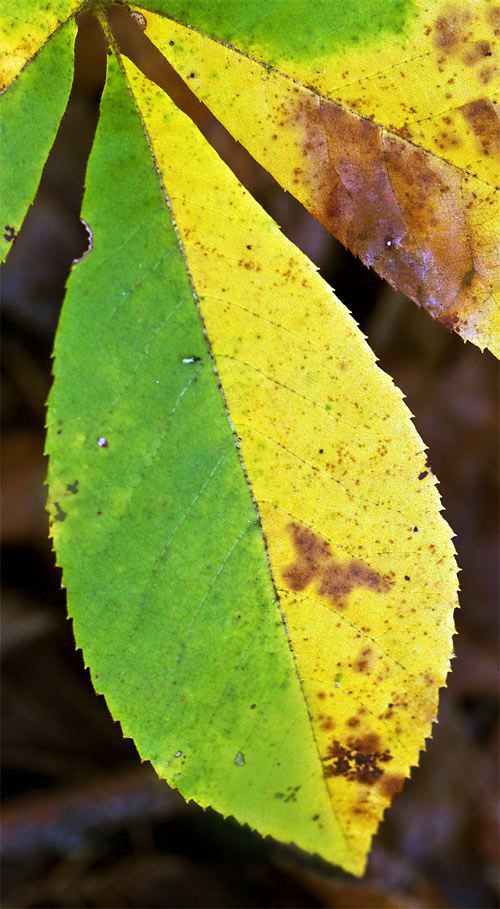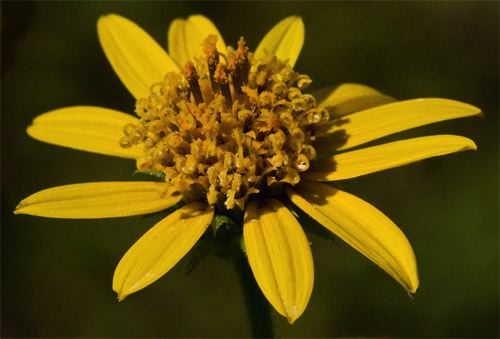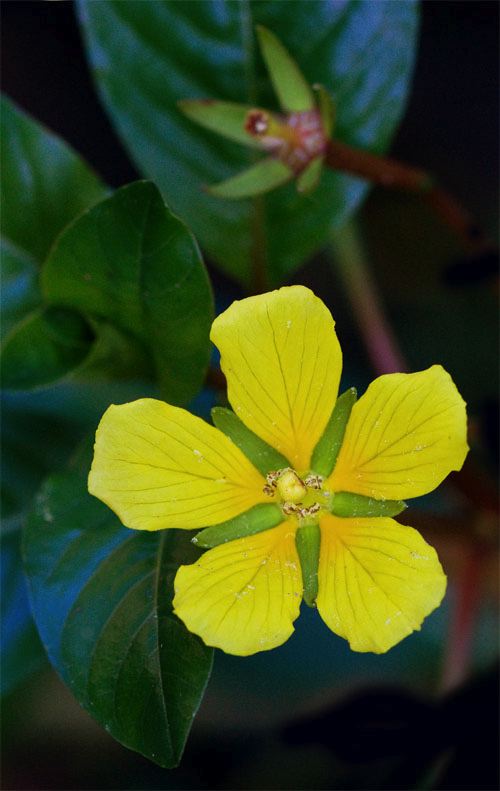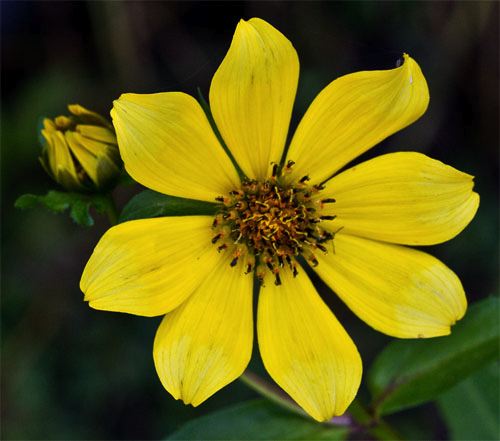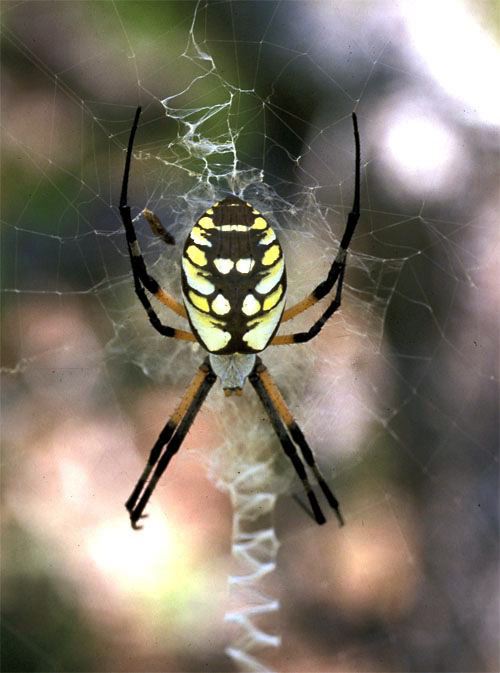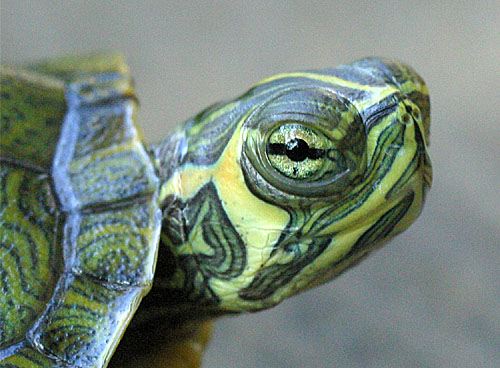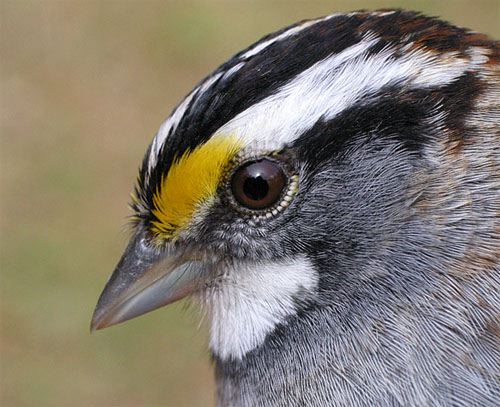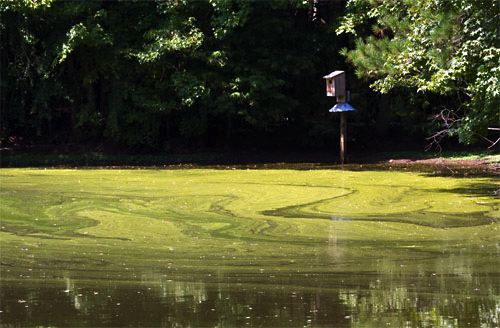|
|
|||
|
(Back to Preceding Week; on to Next Week) |
|
YELLOW: AUTUMN'S TRUE COLOR Although it's not our most favorite color, we like yellow. It's a bright "primary color," and it contrasts nicely with red and green and blue (hence our sky-blue page color this week). According to the standard-setting Pantone Color Institute, "Yellow exemplifies the warmth and nurturing quality of the sun." Look up "yellow" in the dictionary and you get synonyms describing more hues than most of us realize: Amber, blonde, buff, canary, champagne, chartreuse, citrine, cream, flaxen, gamboge,
All text & photos © Hilton Pond Center As we wandered Hilton Pond Center in pursuit of yellow flora and fauna, we came across a hickory seedling with just one leaf bearing only three dwarfed leaflets, so we weren't able to absolutely confirm its species. (We suspect it's Shagbark Hickory, Carya ovata.) What was really unusual was the hickory sprout's terminal leaflet was acquiring fall color--but only on one side. Usually leaves turn uniformly yellow in autumn when water flow is cut off and green chlorophyll breaks down, revealing underlying pigments such as carotenoids (red/yellow/orange) and anthocyanins (red/purple/blue). In our bicolored leaflet above we suspect some insect damaged part of the vascular tissue in the petiole, restricting water flow and thus causing premature yellowing in just half the leaflet. With the advent of shorter days and cooler nights, the green side of the leaf soon will also turn yellow. (Incidentall, the brown spots on the yellow area appear to be some sort of leaf fungus.)
All text & photos © Hilton Pond Center About ten winters ago we lost a hundred-year-old Southern Red Oak to an ice storm that snapped the tree off at mid-trunk and dropped its top branches into Hilton Pond. Because the tree turned out to be hollow and partly rotten, we simply let it lie and didn't try to salvage it for firewood to heat the Center's old farmhouse. The oak has been decomposing further ever since. Aiding this decomposition process have been several kinds of wood-rotting fungi, including the Jack O'Lantern, Omphalotus illudens (above), that erupts each fall as clusters of large, wavy yellow-orange gilled mushrooms. These eight-inch-wide structures are merely the reproductive structure of the fungus; the root-like mycelium is deep inside the wood, doing its all-important work of breaking tree cellulose into simpler compounds. While we photographed, a garden slug glided over the lip of the lower mushroom; this slow-moving invertebrate had spent at least six hours grazing the fungus, creating several tiny craters just above its eyestalks in the photo. In yet another example of the interconnectedness of nature, the slug is helping decompose the decomposer. Interestingly, when it rains the concave yellow caps of the Jack O'Lantern mushroom collect water and provide a temporary home for larvae of fast-breeding mosquitoes.
All text & photos © Hilton Pond Center Our solitary Schweinitz's Sunflower, Helianthus schweinitizii (above)--an endangered species native to the Piedmont Prairies that once dominated the landscape around Charlotte NC--has been blooming at Hilton Pond Center since late September. Like all sunflowers, Schweinitz's is in the Composite Family (Asteraceae) and makes two types of flowers: Sterile "ray flowers" that some folks mistakenly call petals, and fertile "disk flowers" at the center of the all-yellow inflorescence. This particular plant, which has reached heights of seven feet in previous years, was deer-browsed to half that in early summer but rebounded enough to put out a few bright yellow flower clusters this fall. Unfortunately, our lone specimen never seems to set seed, so it's obviously not doing a very good job of propagating itself. It may be we need a second plant with a slightly different genetic make-up to allow cross-fertilization to occur.
All text & photos © Hilton Pond Center We knew the five-petalled flower above was a species of Ludwigia--one of the so-called "Water Primroses"--but it wasn't until we consulted the most up-to-date on-line plant atlas for South Carolina we realized it was Floating Primrose-willow, Ludwigia peploides glabrescens, AND that our home county of York is the only state locale from which this semi-aquatic plant has been reported to date. A member of the Onagraceae (Evening Primrose Family), eye-pleasing Floating Primrose-willow with its bright yellow blossoms and shiny dark green leaves is described as everything from a pernicious invasive to a welcome ornamental in water gardens and pools. The plant has appeared locally during mid-summer the past several years on Hilton Pond mudflats exposed by drought conditions. Our small colony--perhaps 10' x 30' in area--doesn't ever seem to get any bigger and disappears when water levels come back up in winter, so we're uncertain whether to be concerned about its presence.
All text & photos © Hilton Pond Center Not far from the Ludwigia on the flat, muddy, exposed banks of Hilton Pond was another yellow flower (above). Like our Schweinitz's Sunflower it was a member of the Asteraceae, but since there are about a jillion yellow composites, we're not sure of its actual identification. (And we're not kidding about the number of composites, which make up the world's largest family of vascular plants with nearly 23,000 species. A LOT of them are what botanists refer to as DYCs, short for "damned yellow composites" because they're so hard to identify. The white ones are DWCs, and then there are the purple-hued DPCs, etc., etc., etc.) One thing we did notice about our mystery flower was the tips of the outer ring of ray flowers were slightly paler; we're not sure if this is a species characteristic or simply fading from the bright autumn sun. We might also point out that at about 3:30 o'clock on the yellow flower face above you can barely see the wings of one of the tiny Flower Flies (formerly called Hoverflies). Adults in this family (Syrphidae) primarily eat--you guessed it--pollen and nectar. (NOTE: If you can identify the composite flower above--it may be Bidens laevis--please let us know at INFO.)
All text & photos © Hilton Pond Center In addition to Flower Flies, there were other yellow inverts out and about--including a sulphur butterfly that wouldn't stop long enough for a photo. We had no trouble, however, stalking a big female Black and Yellow Argiope, Argiope aurantia (above). Argiopes are in the Orb Weaver Family (Araneidae), a group of sometimes quite large spiders that typically weave even bigger wheel-shaped webs. The alternate name "Writing Spider" comes from this species' habit of weaving an area of dense silk at web center: The stabilimentum. This structure, which fancifully resembles human handwriting, may function to camouflage the spider's shape; some arachnologists think it also keeps birds from hitting and destroying the web. By October, female Black and Yellow Argiopes at Hilton Pond Center have molted several times and are at maximum size--bodies up to an inch long and a leg spread thrice that. Successful females make a large egg sac and then perish as cold weather sets in, their offspring safely ensconced in a spherical, inch-round, waterproof container.
All text & photos © Hilton Pond Center Green Treefrogs, Hyla cinerea (above), are mostly a rich shade of the color their name indicates, but their yellow irises and lateral streaks are most definitely yellow. Historically a coastal species, this little amphibian's inland numbers have increased dramatically in the past few decades--perhaps because such highly camouflaged frogs can hitchhike undetected on cultivated plants. (In support of this hypothesis, we've seen them at indoor garden stores on shrubs and flowers trucked in from the Carolina Lowcountry.) We usually can find a few adult Green Treefrogs such as the one above hanging around our water garden at Hilton Pond Center--they also frequent sliding glass doors and windows--but these year we also encountered little Green Treefroglets hopping and plant-climbing a hundred feet away. This sounds suspiciously like the once-coastal species might be reproducing locally.
All text & photos © Hilton Pond Center This week we also spotted a recently hatched Yellowbelly Slider, Trachemys scripta scripta, in the water just off the end of a wooden pier that juts into Hilton Pond. We weren't able to get a photo--we took the one above several years back when brother Stan Hilton unearthed a nest in nearby Rock Hill SC--but during our sighting this week we could easily see the swimming turtlet's bright yellow facial markings. (A Yellowbelly Slider doesn't actually have a yellow belly, of course, but its lower shell--the plastron that covers the belly--is definitely a pale yellow shade.) Yellowbelly Sliders are true turtles with webbed toes, all the better to paddle about ponds, marshes, and other wetlands they call home. They spent lots of time basking on floating logs and pond banks, warming their cold reptilian bodies with solar heat and combatting ectoparasites with ultraviolet rays. At the first sign of danger they slide silently into the water, hence their name. Most gravid Yellowbelly Sliders that breed at the Center seem to be thwarted in reproductive acivities by hungry Raccoons that dig up and consume the turtles' eggs soon after they are laid.
All text & photos © Hilton Pond Center The big waves of avian fall migration are essentially finished at Hilton Pond Center, so most of those yellow-hued "confusing fall warblers" have already passed through. Ironically, however, this week we caught a couple of birds with definite yellow markings. The first of these was a rather early White-throated Sparrow, a species that seldom arrives locally until much later in October. (Our early fall record at the Center is 4 October 1994.) We actually caught three of these northern sparrows this week, one on 8 October and two more two days later. All were white-phase representatives of the species--some individual white-throats have much buffier head stripes--and all had bright yellow lores. Last winter we hosted almost no White-throated Sparrows, with only eight banded October through April, well below our 28-year average of 68. We're hopeful our recently arrived white-throats portend a much better winter population of this yellow-lored sparrow that whistles its high-pitched "Old Sam Peabody, Peabody" even on cold midwinter days.
All text & photos © Hilton Pond Center Our second yellow-bearing bird species this week even has the word "yellow" in its name, or at least it does these days. Once referred to as Myrtle Warbler, the Yellow-rumped Warbler is now perfectly described; it's a warbler, and it definitely has a yellow rump (above). Many fall Yellow-rumps, also known ingloriously as "butterbutts," will stay with us all winter as one of few Wood Warbler species for which all individuals don't migrate all the way to the Neotropics. The species has a vast breeding range that covers New England, the Northwestern U.S., and almost all the Canadian provinces; come winter they drop down to the lower 48 states, with some continuing on to Mexico, the West Indies, and all of Central America. Quite cold-hardy, Yellow-rumped Warblers wintering this far north shift from consuming mostly insects to becoming frugivores that eat berries. In the Carolina Lowcountry they show a preference for Wax-myrtle fruit, hence their alternate name of Myrtle Warbler.
All text & photos © Hilton Pond Center Yes, it's early fall at Hilton Pond Center but even though the leaves haven't started to change, various shades of yellow were evident many places we looked. Why, even the pond itself (above) was covered some days with a sheen of yellow-green pollen being scattered willy-nilly by grasses and Ragweed. We were happy to see so much pollen on the pond surface even if it was a little unsightly; after all, this meant there was that much less of it to clog our sinuses and cause hay fever. Yellow, yellow everywhere, so based what we found this week--from turtles to treefrogs and spiders to sparrows--we think yellow most certainly could be called "Autumn's True Color." All text & photos © Hilton Pond Center If you have a Twitter account and liked this page, you can Follow us on Twitter: @hiltonpond
|


 golden, honey, ivory, lemon, maize, mustard, ocher, saffron, sallow, sand, straw, tawny, vitelline, wheat, xanthous, and probably several more. We also like yellow because its Spanish equivalent--amarillo--was one of the words we learned (and could pronounce) during our first hummingbird expedition to Costa Rica. But mostly we like yellow because it shows up best in fall--a color dominated all summer by chlorophyll but biding its time until green pigments die so it can burst forth in full golden glory. By early October, yellow hues are everywhere we look at Hilton Pond Center and since we can't and choose not to ignore them, we decided to showcase yellow this week as "Autumn's True Color."
golden, honey, ivory, lemon, maize, mustard, ocher, saffron, sallow, sand, straw, tawny, vitelline, wheat, xanthous, and probably several more. We also like yellow because its Spanish equivalent--amarillo--was one of the words we learned (and could pronounce) during our first hummingbird expedition to Costa Rica. But mostly we like yellow because it shows up best in fall--a color dominated all summer by chlorophyll but biding its time until green pigments die so it can burst forth in full golden glory. By early October, yellow hues are everywhere we look at Hilton Pond Center and since we can't and choose not to ignore them, we decided to showcase yellow this week as "Autumn's True Color."